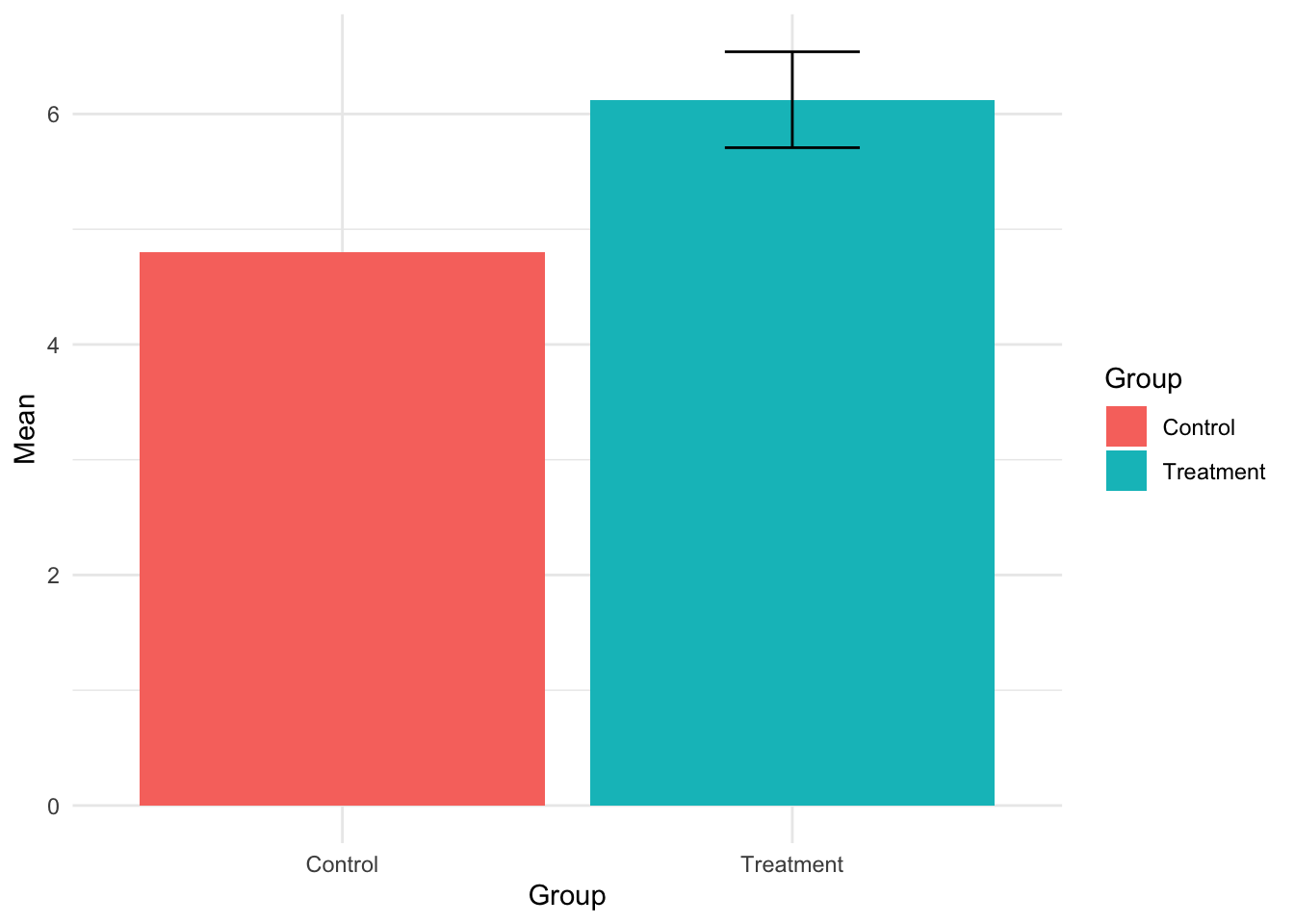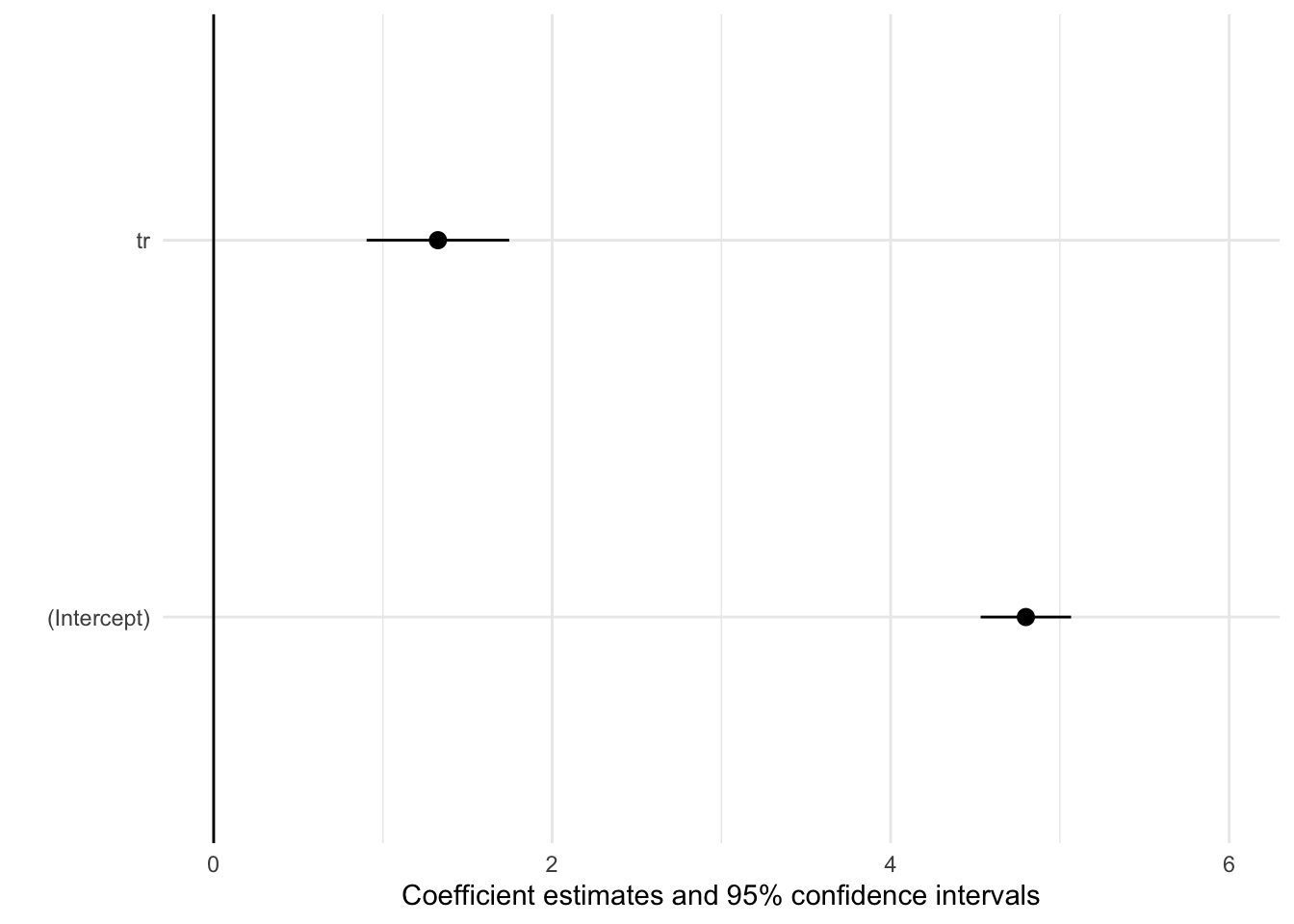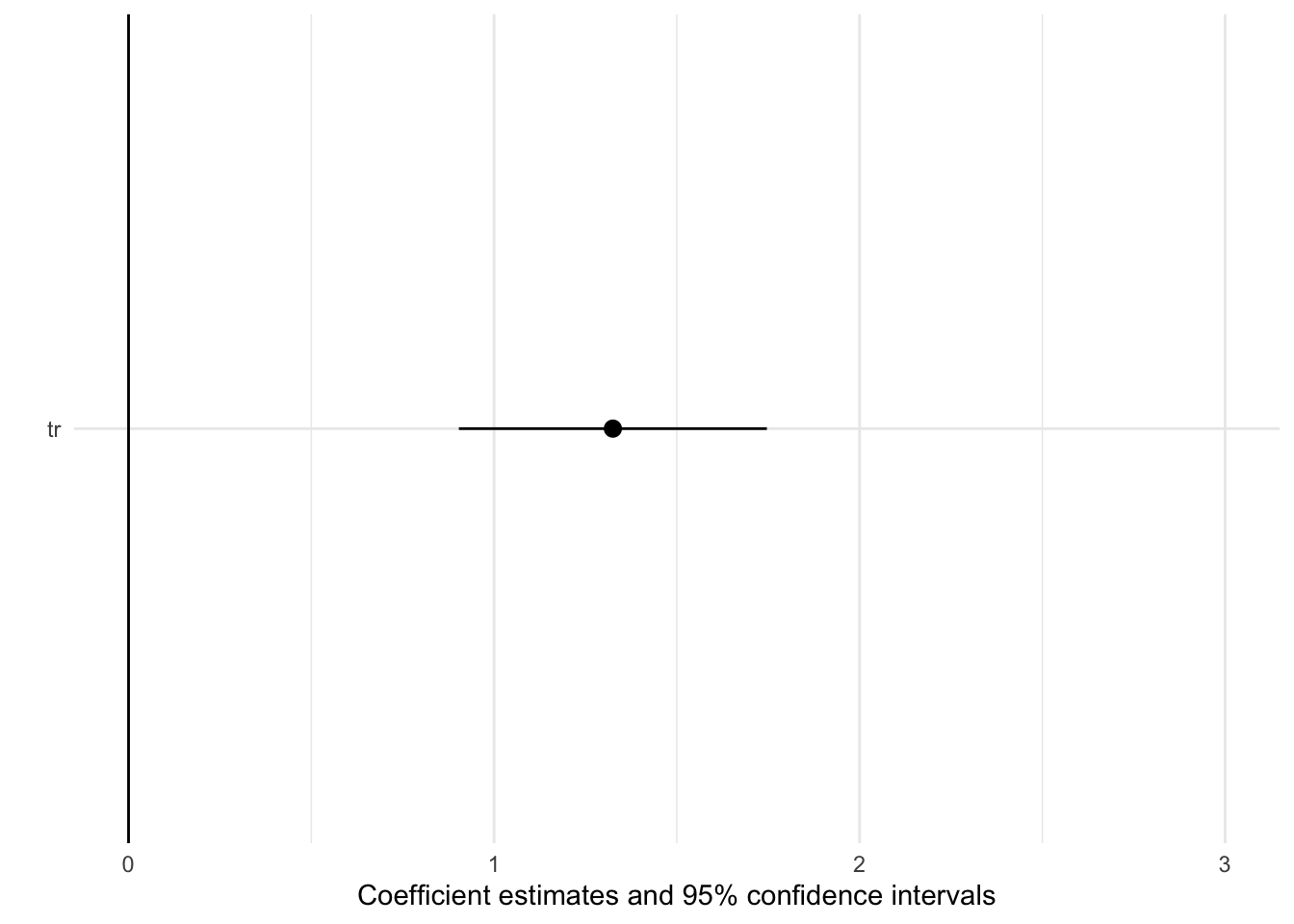Chapter 6 Publication
Projects generate a variety of types of publications. These may include
- Pre-analysis plans,
- Final technical reports,
- Public versions of GitHub repositories,
- Public versions of data, and
- Peer-reviewed academic journal articles.
6.2 Publishing Data
We strive to post useful replication data to the extent possible in each project. Some examples of our work doing so include projects on the 911 nurse triage line and 457b enrollment.
The federal OPRE has some helpful advice for doing so here.
6.3 Presenting Results
6.3.1 Estimates and uncertainties
When we want to communicate group estimates along with treatment effects, we display them with barplots or scatterplots. Where we are interested in inference about a treatment effect, we display the control group and treatment group means, with the uncertainty around the treatment group mean representing the uncertainty around the treatment effect. For example,

When we want to communicate treatment effects without both group means being explicit, we do so with a coefficient plot. For example, with the intercept (control group mean),

or without the intercept,

If the project has had multiple senior advisors, include the one who reviewed the document in question.↩︎